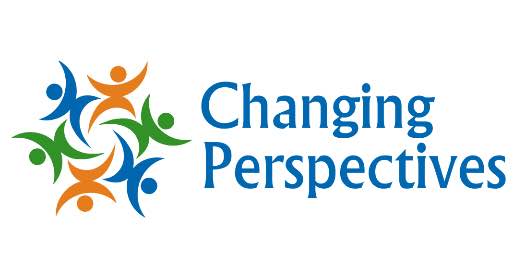 As an educator, you hold the incredible power to influence your students’ growth in ways that reach far beyond textbooks and tests. Every lesson, discussion, and activity is a chance to develop essential life skills. Gratitude is a valuable social-emotional learning skill within the CASEL competency of Social Awareness. Encouraging students to understand and express gratitude by recognizing the perspectives and contributions of others fosters empathy, strengthens relationships, and builds a more inclusive, supportive classroom community.
As an educator, you hold the incredible power to influence your students’ growth in ways that reach far beyond textbooks and tests. Every lesson, discussion, and activity is a chance to develop essential life skills. Gratitude is a valuable social-emotional learning skill within the CASEL competency of Social Awareness. Encouraging students to understand and express gratitude by recognizing the perspectives and contributions of others fosters empathy, strengthens relationships, and builds a more inclusive, supportive classroom community.
By teaching your students to be grateful, you’re giving them a powerful tool supporting academic success and emotional well-being. Gratitude fosters a positive outlook and builds resilience, helping students thrive inside and outside the classroom. As their guide in this process, you play an essential role in shaping these valuable skills.
Keep reading to discover why gratitude is a game-changer in the classroom and how you can easily incorporate it into your teaching practices. We’ll also share practical, easy-to-implement tips to help you start fostering a culture of thankfulness with your students today — empowering you to create a more positive classroom environment.
The Science Behind Gratitude
Gratitude is a powerful emotion that allows us to recognize and value the positive aspects of our lives. When we express gratitude, our brain releases dopamine and serotonin — activating the brain’s reward system and reinforcing positive emotions. Over time, this rewiring of neural pathways makes individuals more resilient to stress and more likely to approach life’s challenges with a positive outlook.
The Benefits of Teaching Gratitude
Teaching gratitude to students is essential for several reasons, as it positively affects their emotional, social, and academic development. Here are some key reasons why it matters:
- Promotes Positive Mental Health
Gratitude increases happiness and emotional well-being. When students regularly practice gratitude, they tend to experience more positive emotions, which helps them manage stress, anxiety, and frustration more effectively. It can create a healthier emotional climate in the classroom and reduce negative behaviors. - Fosters Stronger Relationships
Gratitude encourages students to appreciate others, express their thanks, and build stronger social bonds with peers and teachers. As they practice gratitude, students become more likely to show empathy, kindness, and cooperation, fostering a more inclusive and supportive learning environment. - Enhances Academic Performance
Gratitude shifts students’ focus from what they lack to what they have, fostering a sense of contentment and possibility. This positive outlook helps develop a growth mindset, where students view challenges as improvement opportunities. As a result, students are motivated and engaged in their studies, which enhances their commitment to learning and boosts academic performance. - Builds Resilience
Gratitude teaches students to focus on the positive aspects of their lives, even during adversity. By regularly practicing gratitude, students develop resilience and perseverance. For example, a student who thanks a peer for help during a demanding project is more likely to face future challenges with optimism, knowing that support and positivity can emerge even in difficult times. - Promotes a Positive Classroom Environment
Gratitude contributes to a more respectful and appreciative classroom atmosphere. When students and teachers regularly acknowledge and express gratitude, it reduces conflicts and fosters a culture of kindness, cooperation, and mutual respect, making the learning environment more harmonious. - Develops Emotional Intelligence
Gratitude helps students become more aware of their emotions and the emotions of others. As they regularly express thanks, students become more attuned to their words and actions’ positive impact on others, a critical aspect of emotional intelligence. Understanding and managing emotions is essential for building healthy, lasting relationships inside and outside the classroom. - Encourages Mindfulness
Gratitude helps students become more present and mindful. By reflecting on what they are grateful for, students learn to appreciate the present moment rather than constantly focusing on future achievements or past regrets. This mindfulness improves focus and reduces distractions in the classroom. - Supports Character Development
Gratitude is a core value that contributes to overall character development. It teaches students essential life skills, such as humility, generosity, and responsibility. These qualities improve their behavior in school and prepare them to become compassionate and thoughtful members of society.
Incorporating gratitude into the classroom creates a positive cycle where students feel valued, supported, and empowered to support others. It enhances their academic experience and nurtures personal growth, preparing them to become compassionate and responsible members of society. By fostering gratitude, educators can lay the foundation for a lifetime of emotional well-being, social success, and continuous personal development.
5 Simple Strategies to Teach Gratitude
Gratitude has the power to transform classrooms. It boosts emotional well-being, builds stronger relationships, and enhances academic performance. The best part? You don’t need to overhaul your lesson plans to reap these benefits. By incorporating simple gratitude practices into daily routines, you can cultivate a supportive classroom environment where students thrive.
- Gratitude Journals
Encourage students to start a gratitude journal where they write down three things they’re thankful for each day. This simple yet effective exercise can help shift their focus toward positivity. For younger students, consider using prompts or allowing them to draw their responses. Older students may benefit from reflecting on more detailed situations. Set aside five minutes for this mindful practice at the beginning or end of class. - Gratitude Letters
Ask students to write letters of gratitude to someone who has positively impacted their lives — whether it’s a family member, a friend, or even a classmate. It can strengthen writing skills and foster emotional connection and understanding. Afterward, students can choose whether to share their letters in class, enhance classroom bonds, or send them to the recipient. Ask younger students to draw or verbally express their gratitude. - Thankful Thursdays
Designate one day each week as ‘Thankful Thursday.’ On this day, dedicate a few minutes for students to share something they are thankful for, either verbally or by writing it on a board. You can rotate who shares aloud to ensure everyone feels included. This weekly practice helps students reflect on the positive aspects of their lives, fosters empathy, and strengthens the classroom community. Hearing what others value can build mutual respect and encourage a positive atmosphere, which are critical elements of social-emotional learning (SEL). - Gratitude Tree
Create a ‘gratitude tree’ on your classroom walls or bulletin boards. Students can write down on a leaf what they are grateful for each week and add it to the tree. Over time, as the tree fills with leaves, it becomes a visual reminder of the abundance of positive things in your classroom and the world beyond. To keep the activity engaging, consider adding seasonal themes, like changing the tree’s colors in fall or adding ‘snowflakes’ of gratitude in winter. The gratitude tree brightens the classroom and nurtures a culture of thankfulness, reminding students that gratitude is a growing practice that builds community.” - Model Gratitude
One of the most powerful ways to teach gratitude is to model it yourself. Let your students see you express appreciation regularly — whether for their hard work, a colleague’s support, or even something as simple as a sunny day.
Incorporating Gratitude into the Curriculum
Gratitude is a powerful tool for fostering positive mindsets and emotional well-being in students. Instead of limiting it to specific exercises, why not integrate gratitude into your broader curriculum across various subjects? Here’s how you can incorporate gratitude into your classroom in meaningful ways:
- English Language Arts: Introduce books emphasizing gratitude and kindness, such as Wonder by R.J. Palacio or Because of Winn-Dixie by Kate DiCamillo. After reading, prompt students to reflect on how acts of kindness and gratitude impact the characters’ lives. You can use journaling activities or group discussions where students share moments of gratitude in their own lives or create gratitude letters to the characters in the story.
- Social Studies: Use historical and cultural traditions to teach gratitude. For example, explore the significance of Thanksgiving in American history or similar gratitude festivals in other cultures, such as the Chinese Mid-Autumn Festival. Encourage students to compare these traditions and discuss how expressions of gratitude help bind communities together. You can also have students research how acts of gratitude have influenced social movements or change throughout history.
- Science: Foster a sense of awe and gratitude for the natural world by encouraging students to observe and appreciate the ecosystems around them. Take them on nature walks or have them study different environments, emphasizing how each part plays a vital role in the balance of life. Follow up with activities like creating a ‘gratitude for nature’ poster or writing a reflection on how they can personally contribute to protecting the environment.
By incorporating gratitude into different subjects, you’re not just teaching academic content but also helping students develop lifelong habits of thankfulness. These activities foster emotional resilience, empathy, and a positive outlook, enhancing their educational and personal lives.
How Practicing Gratitude Benefits Teachers Beyond the Classroom
Teaching is both rewarding and challenging, often leaving educators feeling overwhelmed. However, practicing gratitude can be a powerful tool to counteract classroom pressures. By intentionally focusing on the positive aspects of your day and expressing gratitude, you can transform your experience as a teacher in significant ways.
- Reduces stress: Teaching can be stressful, but regularly focusing on the positives helps shift your mindset, making it easier to cope with the challenges of the job. Teachers can significantly reduce stress and prevent burnout by keeping a gratitude journal or taking a few moments to reflect on what went well at the end of each day.
- Improves relationships: Gratitude enhances relationships by fostering a culture of appreciation. When teachers express gratitude to colleagues, students, and parents, it creates a ripple effect of positive communication and support, leading to a more harmonious and cooperative environment.
- Boosts job satisfaction: Teaching is more than just a job — it’s a calling. Gratitude can help you reconnect with the reasons you became a teacher in the first place. By recognizing and appreciating the small wins, teachers can rediscover the joy and fulfillment in their profession, leading to a more profound sense of job satisfaction.
Teaching Gratitude Goes Beyond Classroom Success
Teaching gratitude in the classroom goes beyond enhancing academic performance — it plays a crucial role in helping students build emotional resilience, creating a supportive and inclusive classroom environment, and even boosting teachers’ well-being. You can shape a more positive and connected community by integrating simple gratitude practices, such as daily gratitude journaling or group appreciation exercises.
Gratitude is more than a momentary exercise; it’s a vital skill within CASEL’s five core social-emotional learning competencies. It empowers young people and adults to build healthy identities, manage emotions, achieve goals, show empathy, foster supportive relationships, and make responsible choices.
To support you in this effort, Changing Perspectives offers a range of easy-to-use resources and lesson plans that make incorporating gratitude into your classroom simple and effective. Whether you teach during school hours or lead after-school programs, these tools will help you cultivate stronger relationships with your students while creating an environment where gratitude thrives.
